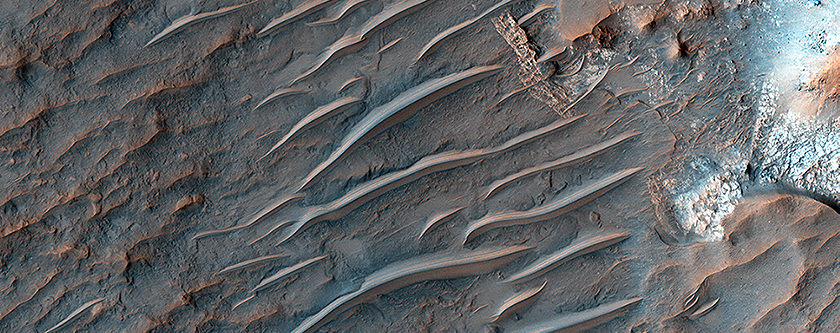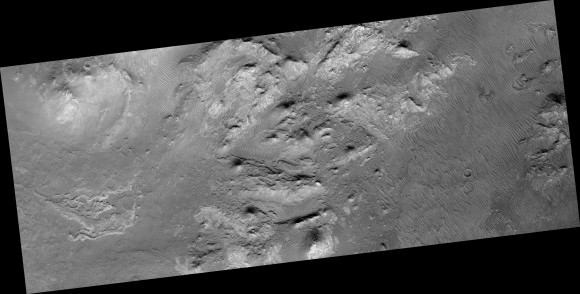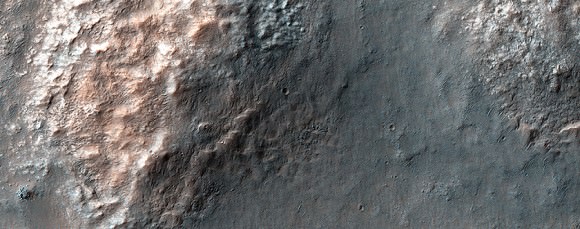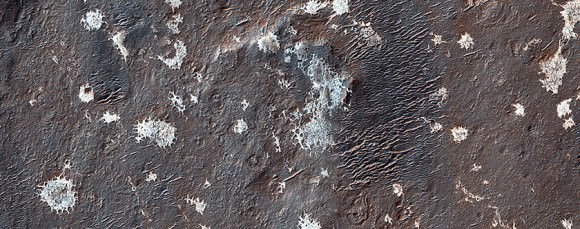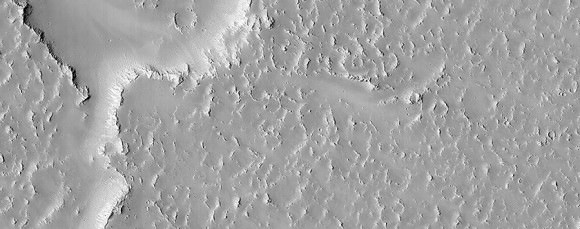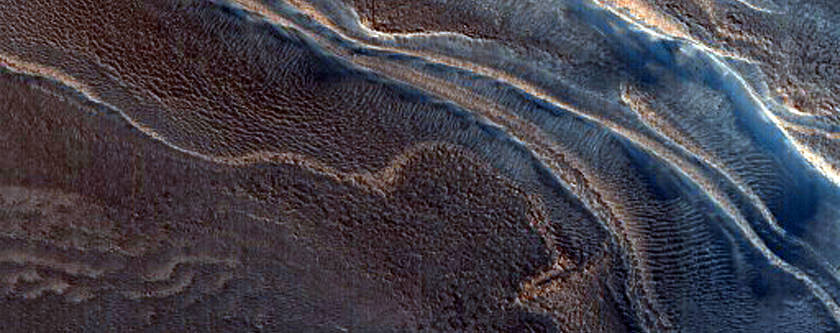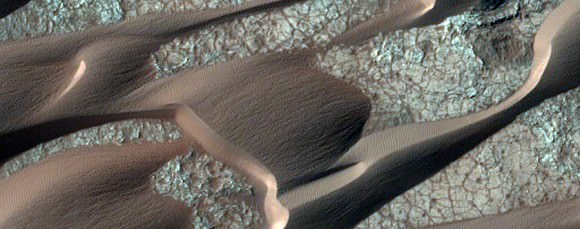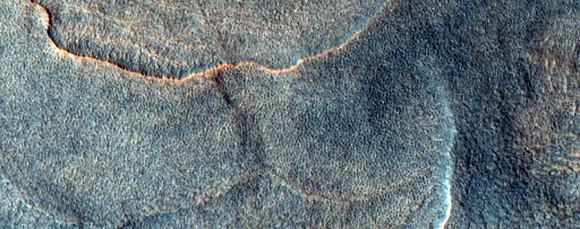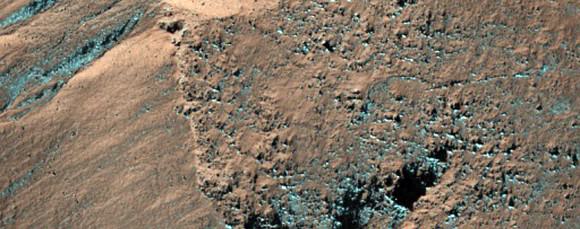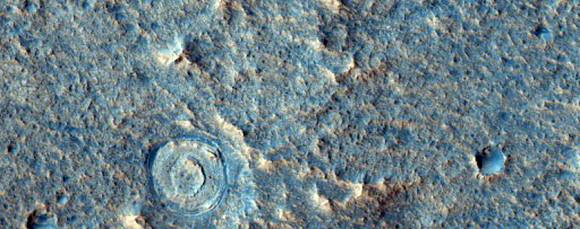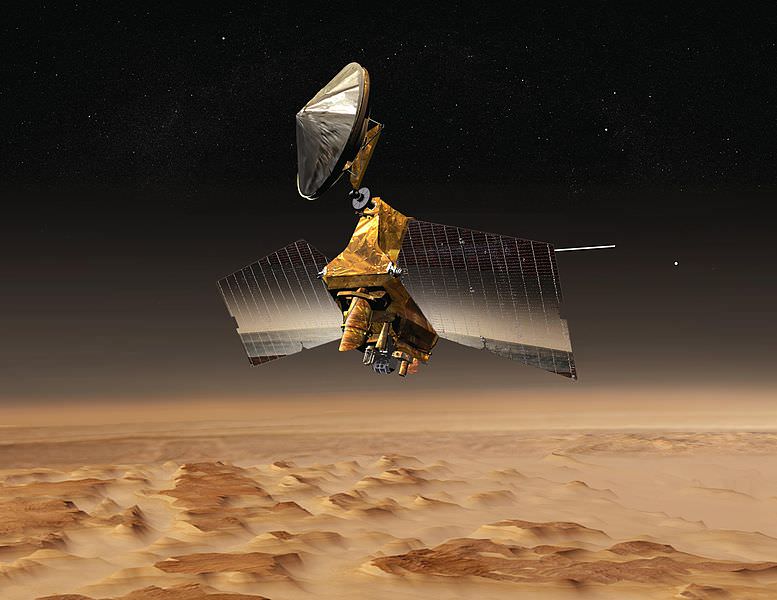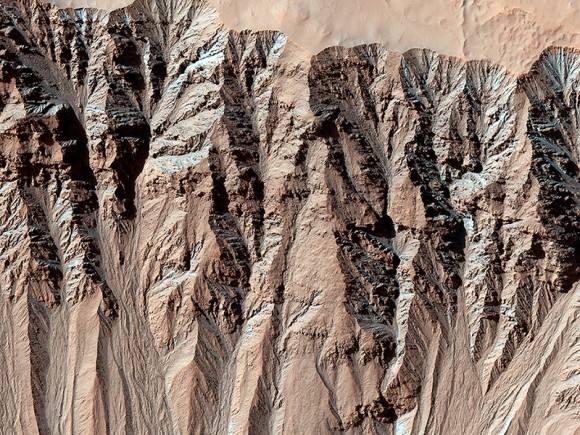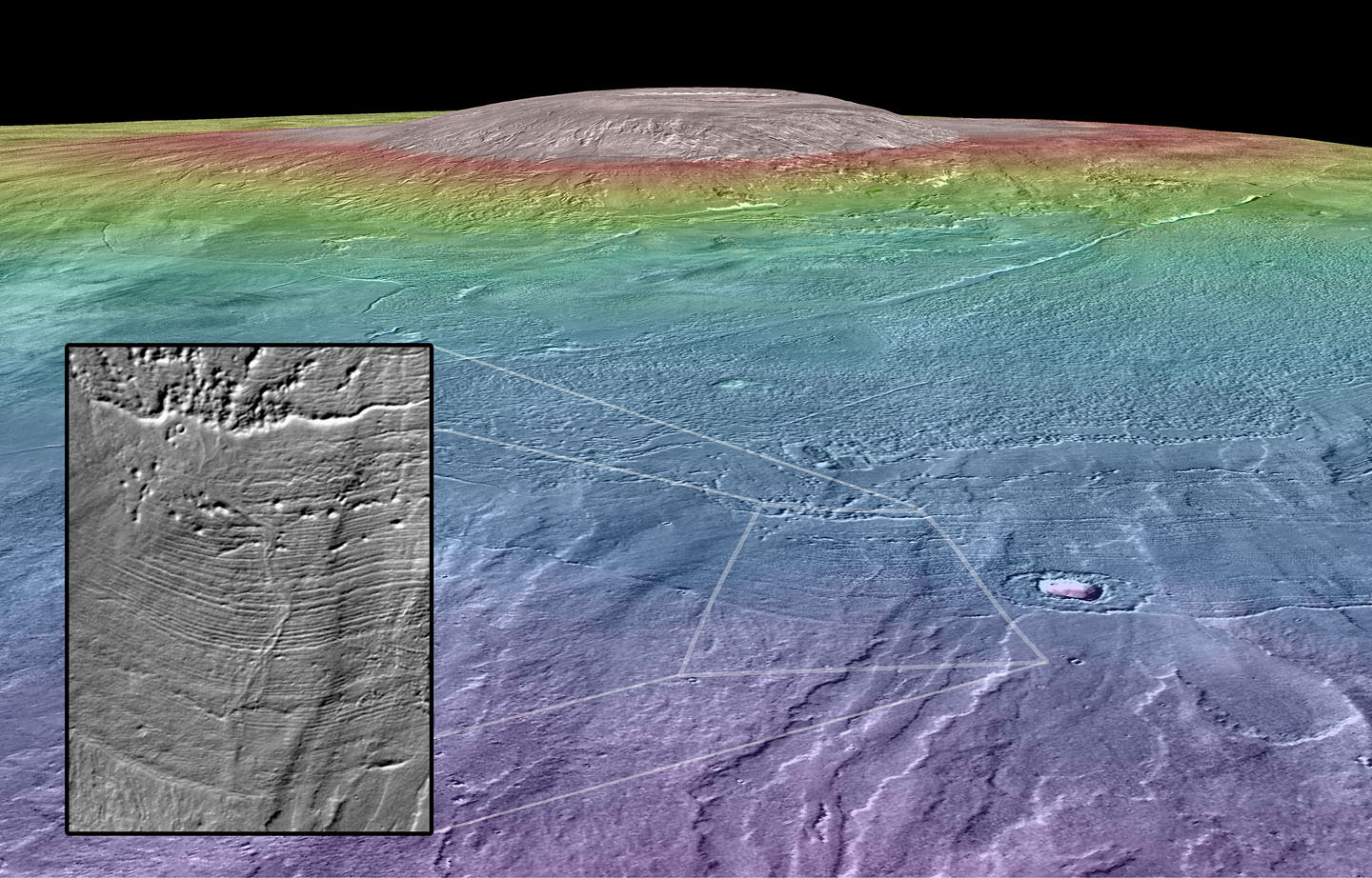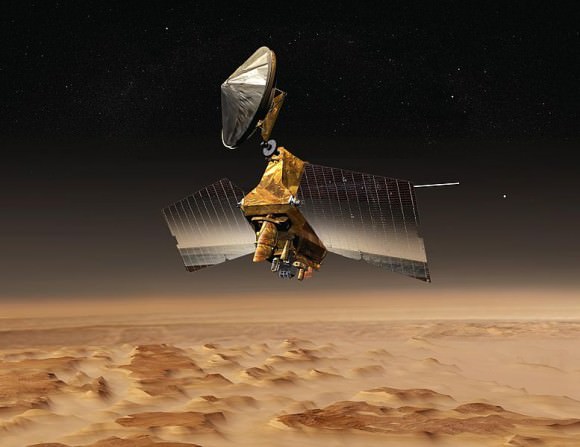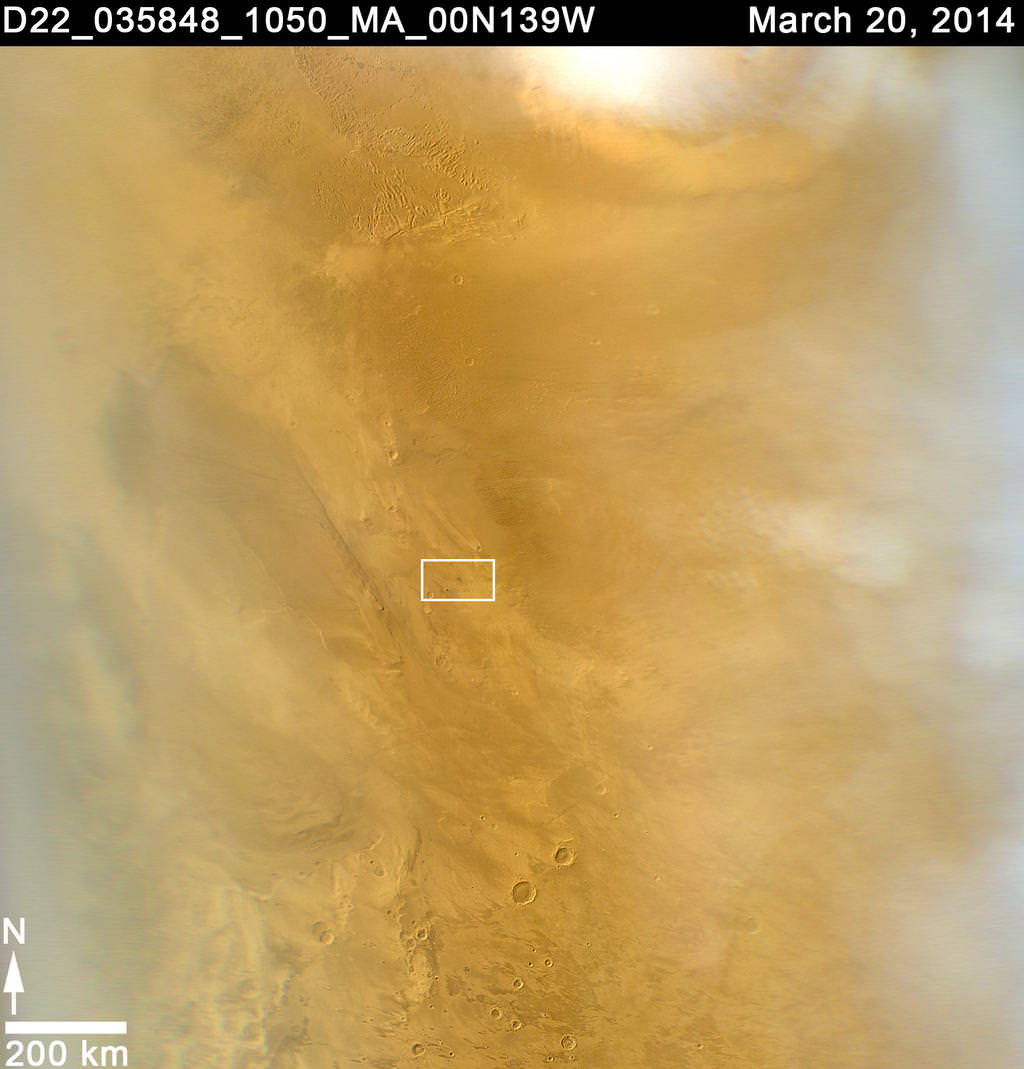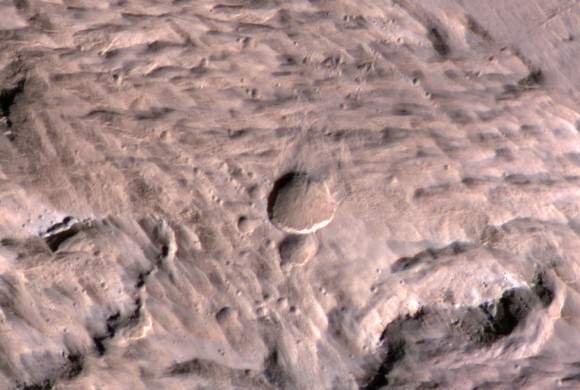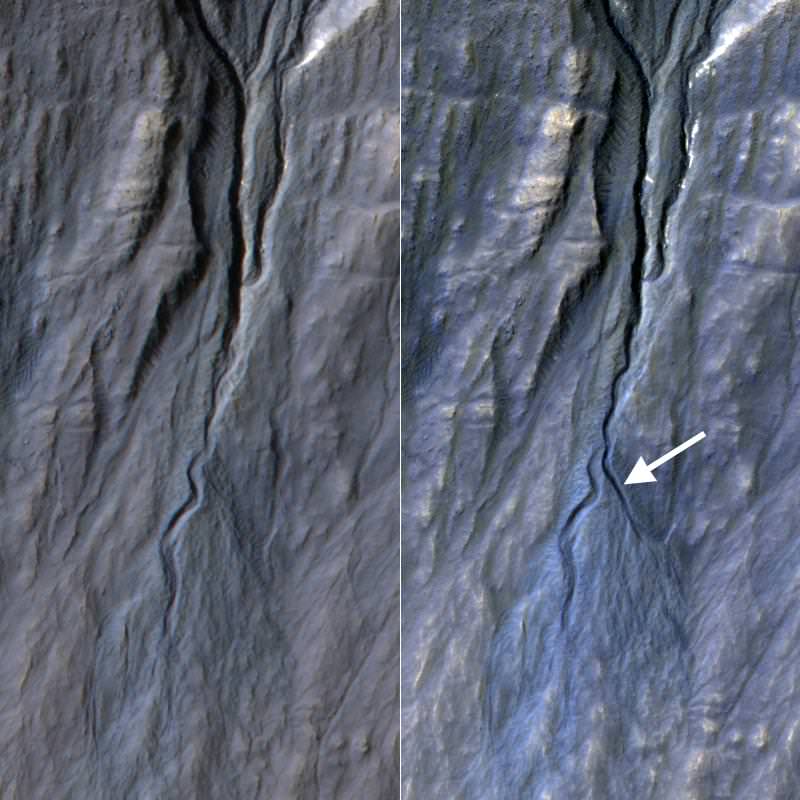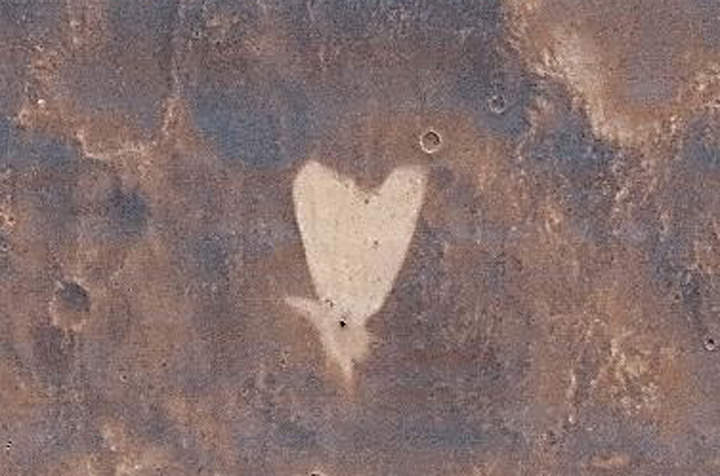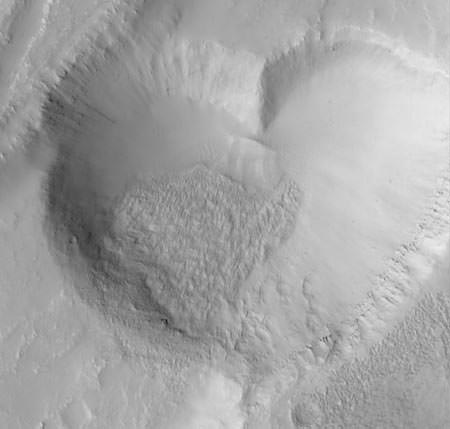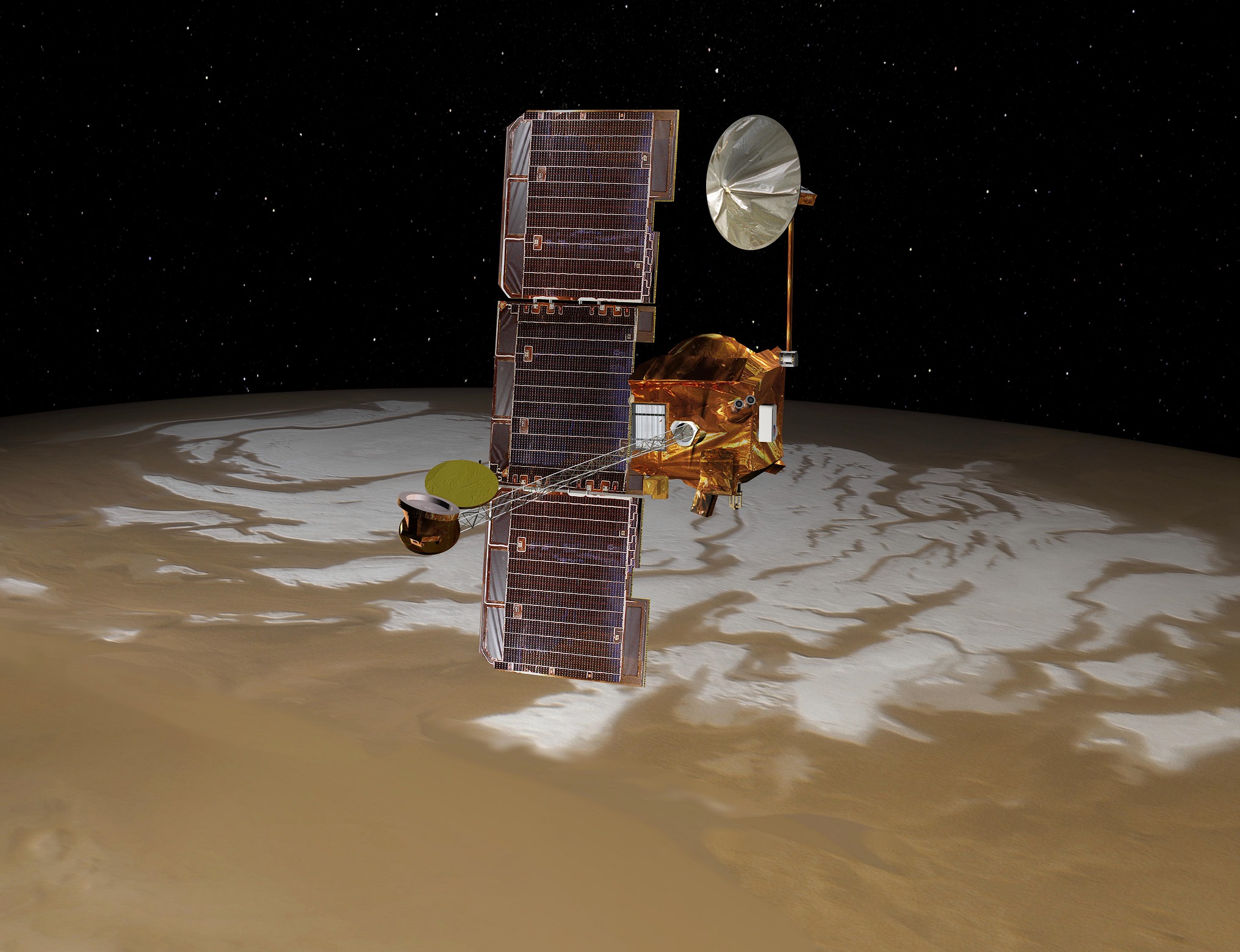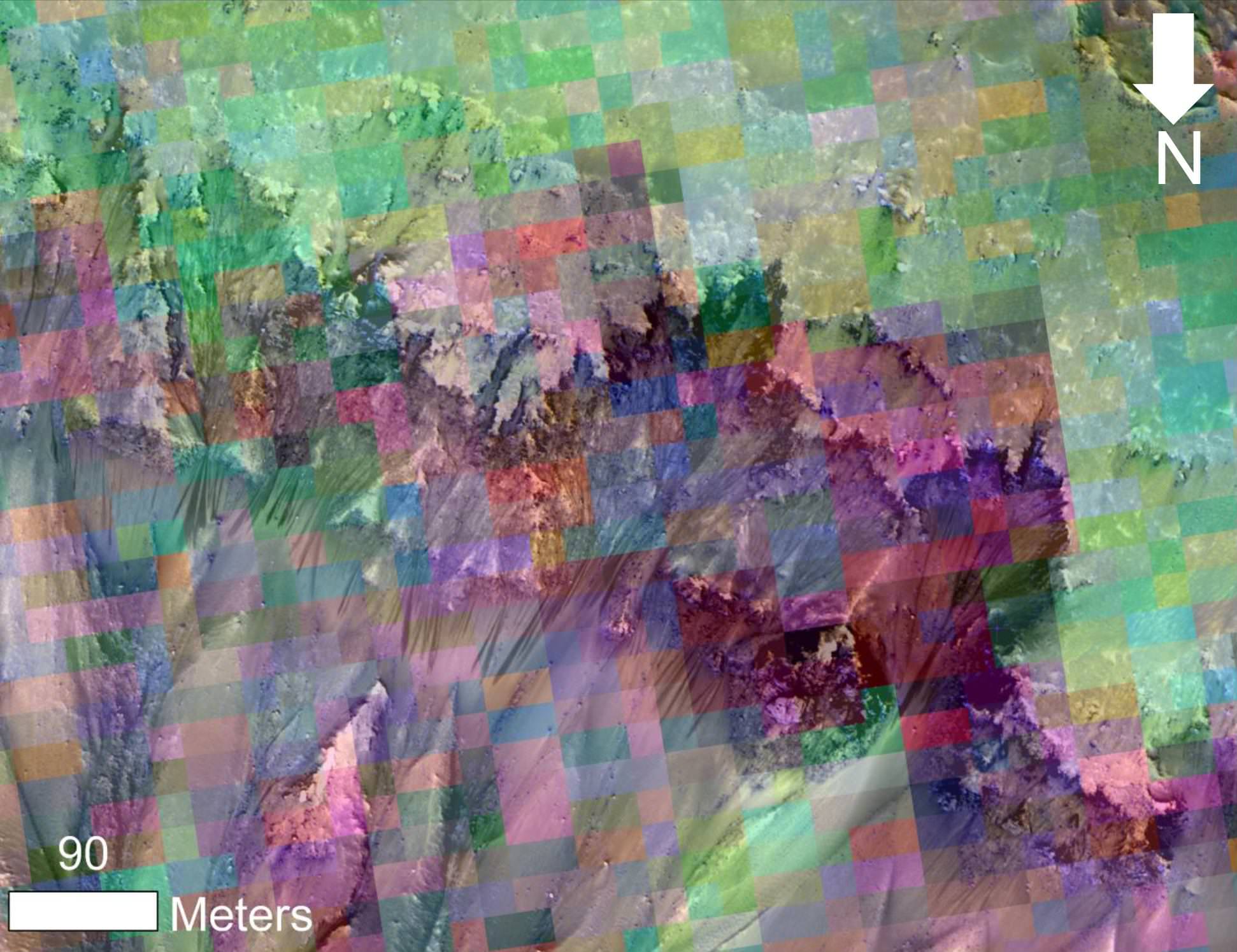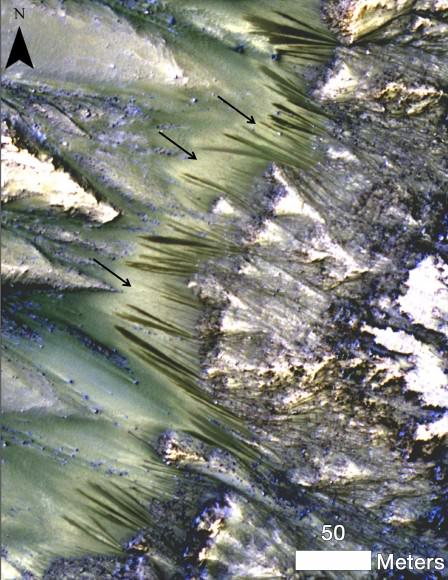Not to be outdone by the feisty Opportunity Rover, the HiRISE camera on NASA’s Mars Reconnaissance Orbiter (MRO) turned in its homework this evening with a fine image of comet C/2013 Siding Spring taken during closest approach on October 19.
The highest-resolution images were acquired by HiRISE at the minimum distance of 85,750 miles (138,000 km). The image has a scale of 453 feet (138-m) per pixel.
The top set of photos uses the full dynamic range of the camera to accurately depict brightness and detail in the nuclear region and inner coma. Prior to its arrival near Mars astronomers estimated the nucleus or comet’s core diameter at around 0.6 mile (1 km). Based on these images, where the brightest feature is only 2-3 pixels across, its true size is shy of 1/3 mile or 0.5 km. The bottom photos overexpose the comet’s innards but reveal an extended coma and the beginning of a tail extending to the right.
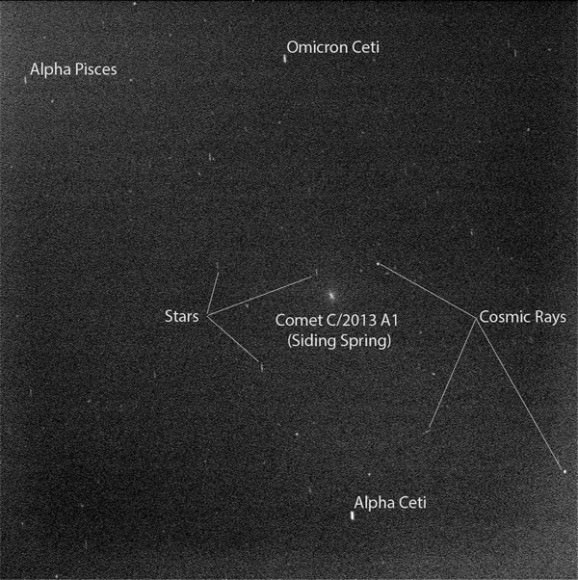
To photograph a fast-moving target from orbit, engineers at Lockheed-Martin in Denver precisely pointed and slewed the spacecraft based on comet position calculations by engineers at JPL. To make sure they knew exactly where the comet was, the team photographed the comet 12 days in advance when it was barely bright enough to register above the detector’s noise level. To their surprise, it was not exactly where orbital calculations had predicted it to be. Using the new positions, MRO succeeded in locking onto the comet during the flyby. Without this “double check” its cameras may have missed seeing Siding Spring altogether!
Meanwhile, the Jet Propulsion Lab has released an annotated image showing the stars around the comet in the photo taken by NASA’s Opportunity Rover during closest approach. From Mars’ perspective the comet passed near Alpha Ceti in the constellation Cetus, but here on Earth we see it in southern Ophiuchus not far from Sagittarius.

“It’s excitingly fortunate that this comet came so close to Mars to give us a chance to study it with the instruments we’re using to study Mars,” said Opportunity science team member Mark Lemmon of Texas A&M University, who coordinated the camera pointing. “The views from Mars rovers, in particular, give us a human perspective, because they are about as sensitive to light as our eyes would be.”
After seeing photos from both Earth and Mars I swear I’m that close to picturing this comet in 3D in my mind’s eye. NASA engineers and scientists deserve a huge thanks for their amazing and successful effort to turn rovers and spacecraft, intended for other purposes, into comet observatories in a pinch and then deliver results within 24 hours. Nice work!


